WHEN: Wednesday, December 4, 2024
WHERE: CNBC CFO Council Summit
Following is the unofficial transcript of a CNBC exclusive interview with Federal Reserve Bank of Richmond President and CEO Thomas Barkin live from the CNBC CFO Council Summit in Washington, DC today, Wednesday, December 4. Following is a link to video on CNBC.com: https://www.cnbc.com/video/2024/12/04/richmond-fed-president-tom-barkin-heading-in-the-right-direction-on-both-sides-of-our-mandate.html.
All references must be sourced to CNBC CFO Council Summit.
STEVE LIESMAN: I’m really pleased to have Tom Barkin here, Federal Reserve Bank of Richmond president and CEO. Tom, let’s get right into it. The question I think is one way to think about policy is how you balance risks and things have maybe changed a little bit since we last talked and since November. Tell me how you judge the balance of risks between inflation, potentially coming back or stalling, and potential weakness in the job market.
THOMAS BARKIN: Well, maybe I should start on the positive side, which is I think inflation has come down a bunch and I’m encouraged with where it’s headed. I think a lot of people on the labor side were worried that there was a cliff there and that also seems not to be the case. So on both sides of our mandate, we seem to be heading in the right direction. Now, today is no promise of tomorrow and so you have to think hard about where you’re going, and I see positives on both sides, but I definitely see risks on both sides. On the inflation side, we talk about the progress but we’re still in the mid twos, not at two, and so we’re still above our target. That’s a risk. On the employment side, you can’t ignore last month’s job report, even if you try to explain it away. 12,000 jobs is not good. We’ll get another jobs support on Friday. And you know, there is risk when hiring is down in this country that eventually job growth starts to slow, and so both of those are risks and I’m attentive to both of them.
LIESMAN: The chairman talked about this notion of recalibration that to me, and I –everybody has their own interpretation of that, basically he talked about adjusting the policy rate somewhat separate from the data. Are we still — well, first of all do you agree with that interpretation? And second of all, are we still in a recalibration mode where you’re adjusting to get to a point where you are sort of closer to neutral?
BARKIN: Well, in our September meeting we cut rates for the first time, and to me the logic was pretty straightforward, which was inflation was a lot closer to target, unemployment was pretty close to what most people think is maximum employment, and the one number that seemed out of sync was the Fed funds rate, which was, depending on how you think about neutral, 200 or plus more percent points over what neutral was. And so the notion of recalibrating the Fed fund rate made sense to me. And I do think that’s the process. So that’s your second question, I guess, which is, did that make sense to me? It is a judgment call when you’re sort of done with recalibrating and ready to start normalizing. And to me normalizing is a slower, more careful path to try to bring rates down to neutral, and I think that depends a lot on where you think neutral is. It’s like a unicorn that no one’s ever seen because you can’t measure it. Even the best models have a 200 basis point standard error, and if you look at the FOMC analysis, we have people as low as two and a half and people as high as three and three quarters. And so it’s pretty hard to know that. But based on where you think that is that’s one determinant. And the other is where you see the risks, and so even the next couple of weeks we’ll learn a lot more. We’ll get another jobs report. Is it going to be more like November or more like October? We’re going to get another whole round of inflation data. Will it look more like the 12-month numbers or more like the last couple of month numbers? So there’s a lot of information still in front of us.
LIESMAN: I get that, but I guess the question remains, are we still recalibrating? Are we still coming down because you need to be in a place that’s closer to neutral irrespective of the data that’s coming up?
BARKIN: Well, that’s a judgment call we’re going to have to make, and I think it really does depend — I think that the story that says we want to get to not very restrictive but somewhat restrictive because we’re not yet at our mandate, but we’re a lot closer than we were. That story is very clear. I’m sure my colleagues on very different points of view in terms of what is somewhat restrictive enough.
LIESMAN: Alright. We’re going to come back to that, but I just want to ask you about, how do you process the potential changes in fiscal policy that could be coming?
BARKIN: We released a CFO survey this morning which Richmond does with the Atlanta Fed and Duke University. A pretty interesting set of outcomes. The CFOs in that survey, and if any of you would like to participate, we’re open for business, we did the survey before the election, half the survey and half the survey after the election. And, you know, what you saw was the business leaders in that survey significantly more optimistic about the state of the U.S. economy, significantly more optimistic about growth. And that’s what I hear from my contacts, too, though I should pause and say it differs significantly based on what industry you’re in. And, you know, if you sell solar cells, for example, you know, that’s a sector that’s not nearly as optimistic. Now all that is optimism of people added together as they do. We don’t know what policies are going to be, though, and you can talk about a 60 percent tariff on China, for example, but is it actually going to be 60 percent or is that going to be threatened and then negotiated? Is it going to be on all products or some products? You know, last time the iPhones weren’t tariffed, for example. Is it going to be done for a short period of time or for a long period of time? Is it going to be met with retaliation or not? I mean, there’s so much uncertainty in there, it’s just hard to make any calls on where — how policy is going to affect the economy and therefore how monetary policy needs to respond.
LIESMAN: I want to come back to how you react to that, but first, I want to ask you this question, do you see tariffs as inflationary?
BARKIN: Well, so, at its simplest, if you, you know, put a tariff on something you increase the cost of it. If you increase the cost of it, that’s got to increase at some level, some pass through the price, so it should do something to increase prices. Inflation, though, isn’t the same as a price for a particular good went up. And I’d like to retain the belief that the Fed has something to do with inflation, and so it’s an inflationary pressure, but does it lead to inflation depends a lot on how, you know, intermediaries respond, how consumers respond, how businesses respond, and how the Fed responds.
LIESMAN: You can imagine there’s three points where you could — monetary policy could react to the fiscal side. Upon proposal, upon enactment or upon showing up in the data. What point do you see monetary policy reacting to fiscal policy?
BARKIN: Well, I think monetary policy is going to respond to the entire economy and fiscal policy is part of the entire economy.
LIESMAN: Right.
BARKIN: So are conflicts in the Middle East and so are —
LIESMAN: Sure.
BARKIN: You know, droughts in the Midwest. There’s a lot of stuff that goes on that you have to react to. And I think with all those, you don’t try to react to a conversation about something. You try to react when you’ve got clarity on it. So, to me, that’s not about, you know, talking about tariffs or whatever today. It’s also you don’t have to wait until the end as it gets in the data. One of the reasons, you know this, that I’m out so much talking to businesses is I want to understand what’s happening before it gets into the data. So it’s not — you have to wait for the data. But you also don’t do it on your judgment of what might happen.
LIESMAN: I asked that question specifically because there is some debate about how the Fed reacted in the pandemic. Should it have —
BARKIN: Everyone think we did the right thing or whether —
LIESMAN: Everybody thinks you did the right thing.
BARKIN: OK. Good. I’ll take that. I’ll take that.
LIESMAN: The plaudits are just overwhelming.
BARKIN: Yes, appreciate it.
LIESMAN: But there are a few, Tom.
BARKIN: Just a very few.
LIESMAN: There is a couple few who think maybe you reacted too late, or maybe you should have taken more account of the tremendous amount of fiscal stimulus that came through and that helped lead — did not cause entirely, but helped lead to the inflation and the inflation sticking around longer. I’m just wondering if you take a lesson from that to how you might respond this time to vast changes of fiscal policy.
BARKIN: Well, I mean, I do think what we do is very hard, because, and I guess I would, but, you know, you’re trying to make policy based on where the economies is going to head. You know, when you change interest rates, it has its, you know, biggest effects, six to nine to 12 months down the road, not tomorrow, and so — unless you’re in the housing sector. But, you know, I think you are therefore trying to figure out what’s happening in the economy. But, you know, economic forecasting isn’t perfect. The old joke is it was made — it was invented to make weather forecasting look good and because forecasting isn’t perfect, you want to be a little bit careful about just assuming something is going to, you know, land the way it does. And you know, with 20/20 hindsight, I would have also wanted to move faster as the Fed in 2021. I’ve said that before, but you don’t get 20/20 hindsight, you’re just living in the world that you’re in. For example, 2018, 2019, when this whole tariff conversation happened, there were a lot of people who said this is going to be inflationary, it’s going to lead to significant inflation. If you look at the overall numbers for inflation for that period, they weren’t, you know, high at all. There are now a bunch of analyses that are done with 20/20 hindsight that would suggest somewhere between, you know, three-tenths of a point or four-tenths of a point of inflation were driven by this tariff or that tariff or whatever. I mean, you can sort of make policy with some big grand sweep of where things are going to go or you can just spend some time seeing what’s actually going to happen. And I think somewhere in the middle of that is the right answer.
LIESMAN: Right, So, I mean, I asked the question about the three different points. I don’t know what the right answer is.
BARKIN: Yes.
LIESMAN: Because, you know, if you think about it, if you — exactly the point you made, which is that stuff shows up in the data in ways you didn’t expect, but if you wait until it shows up in the data you’re going to be — you’re potentially too late.
BARKIN: And I’ll come back to, you know, I really think, and you know, for you guys, CFOs of companies, use this every day. I think you’re seeing what’s happening a lot sooner than the data is. We will get data, good data on what happened to retail sales in November, you know, what, two weeks from now. We’ll get consumer spending for December at the end of January. If you’re out there selling things to consumers right now, you have a much better sense of what’s happening in the economy than the data does. So why would you wait for that? I think that’s why, I mean, you guys add so much value to this — to our input in terms of what’s happening in the economy.
LIESMAN: It sounds like you’re kind of up in the air about what to do in December.
BARKIN: Well, I never prejudge.
LIESMAN: Right.
BARKIN: I mean, we’ve been around long enough to know that.
LIESMAN: And you’ve been around long enough to know I’m going to ask you anyway.
BARKIN: Exactly. Thank you for that. I mean, like I said, there’s a lot information we’re still going to process. I always look forward to the debate, and you know, for those of you who have options, I never exercise an option until its due date.
LIESMAN: At the same time broadly over time, do you believe the Fed is more restrictive than it needs to be given where inflation and GDP and jobs are right now?
BARKIN: Is that another way of asking whether we should cut in December?
LIESMAN: No, no, it’s really not. What it’s in fact, it’s sort of conceptually anyway leaps over December.
BARKIN: OK.
LIESMAN: And says over the broad horizon, do rates need to come down?
BARKIN: Yes, I’m going to pay a lot of attention to the first quarter, is how I think about it. For those of you who remember, last year we were surprised with a very high inflation in the first quarter and, you know, that put a lot of people who thought, you know, we’d sort of had a soft landing, it was time to declare victory, you know, back on their heels. If we have sort of normal inflation, like the inflation we’ve had over the last three or six months, over the first quarter, the 12-month numbers are going to come down just because the comps are where they are. But if you have high inflation in the first quarter, that will be a signal at least to me that we have a lot more work to do on inflation. That’s part of it. On the other side of it, you got growth on the jobs side. I talked about what seems like increased optimism. Will that optimism turn into investment and hiring and growth? That’s something to see. When I’m talking to businesses — how would I put it? I’d say, they feel to me a lot more certain about the financial market variables today than they do about the demand variables. They seem to know the path of the Fed is on. They seem to know that long rates aren’t just going to drop immediately because, you know, the Fed dropped short rates based on experience in last three months. I see people sort of clarify that. I think that’s why the deal markets are opening up a little bit. I think the financial market, things are getting a little more certain in people’s minds, but we’ve talked about some of these policy variables. I think people are more uncertain now about the policy variables, and so I think it may be that — I hate to say this, but maybe we step back from the front stage with inflation and the big — demand and supply becomes a much bigger topic.
LIESMAN: And for the record monetary policy became the number one concern of CFOs in your survey. It was not prior to the election.
BARKIN: No, no, it went the other way around.
LIESMAN: The red bar was —
BARKIN: Now we’re going to debate bars that came out this morning. So hopefully I mean, basically we said what’s your biggest concern and then the number one concern was scaled at 100 and down to zero, and before the election monetary policy was 100 and there was another one — no, a 99, another at 98. After the election, regulatory policy was 100 and monetary went down to 83.
LIESMAN: OK.
BARKIN: I hope I got that right.
LIESMAN: I’m sure you did. Let’s talk about, though, this notion. You just talked about financial markets. If I’m a big company and I can go out there and borrow, the financial markets reflect an easing that’s happened really a year ago when the Fed pivoted rhetorically and then started to cut rates. If I’m a small business, though. NFIB survey showed that small businesses lending a 10 percent plus. If I’m a consumer, then I’m borrowing at, you know, either the personal rate, which is in probably double digits or close to it. Do you need to reduce rates in order to provide that same stimulus that’s already priced in to the forward market and financial markets to mainstream?
BARKIN: Well, I’m not sure how much of that is rates and how much of that is bank appetite, right? And I do think some of that, that you’re talking about, small business access, for example, is around bank appetite, which we all know pulled back a little bit when rates went up, and pulled back a lot when Silicon Valley Bank went down. And when I say the financial dimensions are getting really clearer, what I’m trying to test with the banks that I’m talking to is, you know, are you starting to lean into lending? And when you lean into lending that’s access, it’s also rate, but has a lot to do with access. And I’m not — it’s probably too early to declare that as a given but I’m starting to hear the fresh shoots of that. Again, I talked about the deal market, I think a lot of that stuff is happening because we’re now — 18 months after that. A lot of liquidity pressure is increasing in the rearview mirror. A lot of the pressure put on by the hold maturity assets comes down, as the rates come down. And I do hear people more invested in that. And I think that will flow through to borrowers, too.
LIESMAN: Tom. one of the great things you added to the conversation about inflation, I think beginning about in the middle of a pandemic, was this notion of kind of, the culture of inflation. I guess that’s the best way to put it or the way I put it anyway, and that for a long time before the pandemic, it wasn’t cool to raise prices or acceptable, and then all a sudden, the culture changes in business where it’s okay to do that. Where are we at now in that process? Is it still OK for businesses to raise prices or are they getting a lot of pushback from the consumer?
BARKIN: So when I was here a year ago, I said exactly that, which is, you know, having had the experience to raising prices, and by the way, it goes straight to the bottom line, you know, people were loathed to give that up. What I start hearing around May and then increasingly to the summer, was that finally consumers had the — I’ll call it the emotional capacity to start pushing back. And what we’re seeing I think very strongly now is consumers are frustrated. They’re frustrated by high prices. Two years ago, they didn’t have the energy to do it when — everyone — didn’t have the case for doing it when all these supply-chain things were happening. But now people are pushing back. And so, if you look at earnings reports today the people who seem to be maintaining momentum are people who have put stuff on discounts or selling things on promo or consumers are moving channels from — or move train down from beef to chicken, they’re moving channels from, you know, the mass-market groceries to the Walmarts of the world. And I think that’s what’s happening. People are frustrated and they’re trading down. So I do think were into another phase of it. That is part of what gives me confidence on inflation. I will say this, that if you look forward a year or two, and you start imagining cost increases in sectors either because you’ve got, you know, commodity supply constraints coming or tariffs coming or whatever. I do think the bar to raising prices is lower than it was five years ago. When the tariffs hit in 2018 and ’19, I met with a zillion companies and asked them, are you going to pass it on? And I heard a lot of people say things like, well, I’ll pass it on where I can, but there’s just no way I’m going into Home Depot and, you know, giving them a price increase. They’re not going to accept it. I just think the barrier for that is lower than it was then, because people had such recent experience raising prices, and I think the acceptance level is going to be higher because people have accepted prices.
LIESMAN: So you’re coining a concept inflation recidivism is what you’re saying —
BARKIN: Well, that’s a good — I think — I just think the bar has lowered. I do believe that right now in the economy that we’re in, it’s very hard to capture price. Elasticity has come back, and it’s come back with a vengeance. And those of you who sell to consumers, I’m sure are seeing that. But that doesn’t mean that’s a given, and, you know, if you start singing cost pressures, I think there’s less resistance to cost pressures than we had five years ago.
LIESMAN: Tom, I want to get the questions from the audience in a second, but I have spent the better part of my professional career covering economics and trying to understand the role of productivity. I don’t know that I’ve had very much success over a couple of decades, but right now we are in the middle of something of a productivity boom or boomlet, depending upon how much you want to — where you want the measure from. How does that factor into your thinking about monetary policy and how confident are you that it’s going to stick around?
BARKIN: Right. So productivity, and for those, you can follow what we do, famously in the late ’90s, you know, Greenspan saw productivity when no one else did. And as a result, you know, wasn’t worried about growth, driving inflation, and the ’90s, you know, prospered on. It wasn’t a pretty ending to all that, but we won’t spend much time on that. But there’s no doubt that in the last couple of years the productivity numbers have taken a turn up, even over the last 10 years, the productivity numbers have taken a turn up. A lot of you might want to say there’s artificial intelligence. I don’t really think it’s yet artificial intelligence. It may be. But I do think what’s happened is a bunch of you were short two years ago staff. And it was that kind of a desperate situation and when your short staff that incense you to do two things with some vigor. One is invest in redesigning your processes for productivity. If you go to a Wendy’s you’ll see that the person at the — taking the order at the drive-through is also taking the order, you know, at the cash register. And investing in capital expenditures that create productivity. And I’ve talked to zillions of businesses that have done that. And so, today what’s come online is people are reaping the value of the investments made two years ago, both in processes and in equipment. I think that’s absolutely driving productivity. And I think there is still a tale to that. I don’t think we’re done with that. You know, how much you can assume happens over the long term I think is really hard to do, but if you believe as I believe that we’re going to have 20 years where labor is going to be short not long, because of demographics, right, which are kind of unassailable, then I think businesses are going to be incentive for labor subsidy technology and processes on an ongoing basis. So I think there’s at least a germ of incentive in there, which may pay off for a while.


















